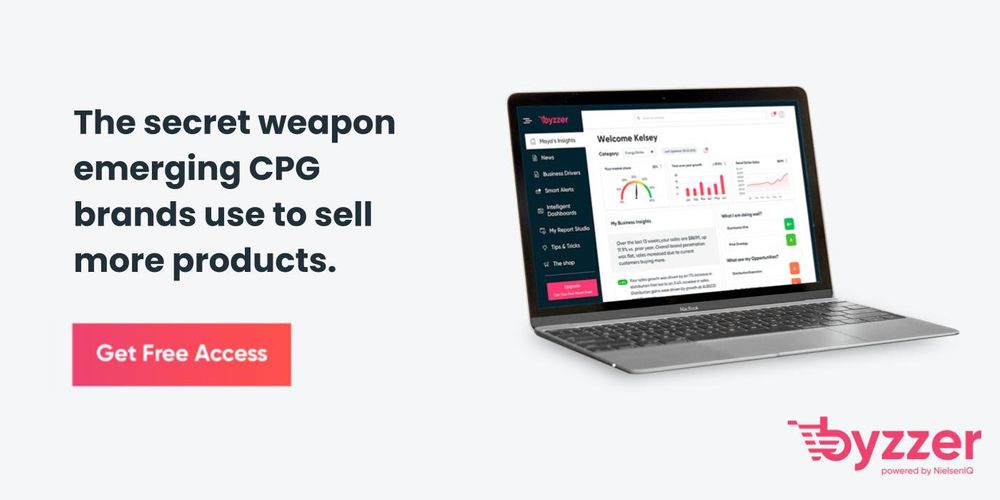|
Good afternoon. Well, it was going to happen eventually: eBay is getting in on that sweet, sweet NFT money.
It’s the first e-commerce company to jump on the trend—but it definitely won’t be the last. Any bets on who will be next?
In today’s edition:
- Define “sustainable”
- Barnes & Noble owner acquires Paper Source
- Target’s latest private label expansion
— Halie LeSavage, Katishi Maake
|
|

Francis Scialabba
|
Last Thursday, we hosted the sophomore edition of our virtual event series, The Checkout, with a conversation about the ins and outs of sustainable retail. Halie spoke with our two panelists, Karla Gallardo, CEO and cofounder of Cuyana, and Saskia van Gendt, Rothy’s head of sustainability.
TL;DR: For Gallardo and van Gendt, sustainability is centered on three interconnected factors...
Click here to watch the full event replay, and keep reading for the biggest takeaways.
Managing demand
A full closet: Excess inventory is a common issue in the fashion world, and was exacerbated during the pandemic with retailers canceling orders.
- By owning its own factory, Rothy’s is able to produce on demand and avoid waste in production, van Gendt said.
- While Cuyana doesn’t own its factories, the company worked with suppliers to divvy up pre-pandemic orders over a longer period of time, so as not to produce everything at once.
“We basically expanded the timeline of delivery of those products, and neither were the factories in a bad place, nor were we in a place where we overproduced,” Gallardo said.
Durability of products
Built to last: Considering a product’s lifespan is key to a sustainable business practice, our panelists told us. Van Gendt said it’s important for retailers to “focus on fewer, more high-quality products.”
- Rothy’s boasts the durability and washability of its recycled footwear, and a 3D knitting process that eliminates product waste.
- 65% of consumers say they plan on buying more durable clothes post-pandemic, according to a July 2020 McKinsey & Company survey.
The circularity
Cuyana wants its products to live on—even after showing some wear and tear. The company’s Lean Closet program with ThredUp lets customers return worn pieces so they can be refreshed and given a second, third, or even fourth life. (Other brands have similar programs; Patagonia actually offers credit for trade-ins.)
- “Circularity on materials is something I wish the industry was moving faster toward,” Gallardo said. “Upcycled materials is an area where I think there’s huge opportunity and where innovation will just make companies like us even better.”
Time to innovate: Meanwhile, Rothy’s has committed to having fully circular production by 2023. Van Gendt agreed the fashion industry must close the loop and figure out more recycling solutions.
- This year, Rothy’s is launching a pilot program that disassembles shoes into their main components, then Rothy’s figures out how to recycle those parts, and by next year, the company hopes to reuse twice-recycled materials.
“The time has arrived for apparel and footwear to step up and create more [sustainable] solutions to think about the connectivity between circularity and carbon footprint,” van Gendt said. — KM
|
|

Francis Scialabba
|
What kind of card do you give a newly acquired card store? Barnes & Noble owner Elliott Investment Management will buy Paper Source, according to a press release, in a deal that will cover its exit from Chapter 11 bankruptcy.
The prologue: A year without wedding or grad party invites, coupled with pandemic store closures, pushed Paper Source into a bankruptcy filing this spring. Paper Source also missed payments for several vendors post-filing, some of whom told Retail Brew that the mistreatment irreparably damaged their businesses.
The next chapter: Under Elliott’s ownership, Paper Source will continue operating its ~130 stores along with wholesale and online channels. Paper Source will operate independently from Barnes & Noble...but joint CEO James Daunt hinted the two retailers could partner down the line.
The spoiler alert: New ownership may not protect Paper Source from further paper cuts—just look at its new sibling. Elliott said Barnes & Noble has maintained a “strong” performance over the past year, but Daunt’s overhaul plan is still a work in progress: Sales at the bookstore were expected to fall as much as 20% in 2020. — HL
|
|

|
If you’re like us, you’re ready for a summer of f-u-n. We’re talkin’ pool games, board games, pets wearing clothes. And do you know what’s the marketing equivalent of jackknifing into an infinity pool? Turbocharging your SMS campaigns with help from a new report from Attentive.
Attentive’s 2021 Marketing Benchmarks Report shows you how to cannonball into personalized text content that can help drive revenue.
Based on surveys with hundreds of retail and e-commerce marketers, this report is chock-full of insights, such as:
- Where SMS fits into overall consumer engagement strategy
- How marketers rate their current programs
- The most common strategic challenges
And more. Did you know that nearly 96% of marketers using text messaging say it’s helped them drive more revenue?
It’s (almost) summer, baby, and that means leaning back and cracking open a cold can of SMS marketing wisdom.
Download Attentive’s report today.
|
|

Courtesy of Target
|
Non-dairy chocolate mousse. Buffalo cauliflower wings. Italian-style meatless meatballs. It’s not the new menu at Eleven Madison Park—it’s the lineup for Target’s latest private label expansion.
Good & Gather, Target’s largest private label food brand, with 2,000 items, is adding 30+ plant-based products to its assortment. With low margins for retailers and lower prices for consumers, private labels like Good & Gather are exploding in popularity…
- Good & Gather is one of 10 Target-owned brands to cross the billion-dollar sales threshold, generating $2+ billion in revenue last year.
- Across aisles, Coresight Research reports private label sales grew faster than name-brand groceries for the fourth consecutive year in 2020. Still, they only amounted to ~17% of the total US grocery market.
Nutrition facts: Good & Gather isn’t foraging in the plant-based aisle for the fun of it. Target shoppers are increasingly demanding more plant-based options, Chief Food and Beverage Officer Rick Gomez said in a release. Already, Target’s plant-based assortment has grown “fivefold” over the past three years, per Grocery Dive.
Competition aplenty: Retailers from Amazon (with its Aplenty line) to Albertsons (with ~800 new private label items incoming) are also investing in owned grocery brand expansions this year. Target’s betting that a line tied to a growing trend will extend its billion-dollar streak. — HL
|
|
-
Vinted, a secondhand marketplace founded in Lithuania, raised $303 million in funding.
-
Backdrop is the latest DTC brand to be acquired, snatched up by luxury design house F. Schumacher.
-
Amazon quietly introduced its palm-scanning payments on the East Coast.
-
L Brands will skip a sale and instead spin off Victoria’s Secret by August.
-
Department stores are bouncing back, with April sales jumping 202% YoY.
|
|
SPONSORED BY BYZZER (POWERED BY NIELSENIQ)
|

|
Get into more retailers. Byzzer gives you the data-backed insights you need to convince retailers why they need to put your product on shelves—and keep it there. No more walking into retailer meetings empty-handed, readers. To start getting into more stores faster and easier than ever, get free access to Byzzer today.
|
|

Francis Scialabba
|
On Wednesdays, we wear pink spotlight Retail Brew's readers. Want to be featured in an upcoming edition? Click here to introduce yourself.
Blandine Mathieu went from unpaid ad agency intern by day and waitress by night to the founder and creative director of her own branding agency, NiceDay. Here, Mathieu gives us a look at her workday—and her favorite brands.
Describe your job in a sentence: My role as creative director is to determine the creative vision for a project and deliver a strategic plan for my clients that helps them achieve their desired outcome.
One thing we can’t guess about your job from LinkedIn: The greatest challenge creatives face is bringing to life someone else's vision, because it isn’t black and white like a physical good. Doing this effectively and efficiently requires a near-mindreader-like skill set.
Favorite brands to follow: Credo Beauty, Reformation, and Vrai.
One emerging retail trend you’re excited about: Social commerce. How businesses and brands win the hearts of their consumers moving forward in this space is going to be a challenge with competition increasing. It’ll require creativity and highly specialized content.
|
|
|
Today’s top longreads in retail.
An industry reeling: Worker scarcity is becoming an issue for many restaurants, with former employees reluctant to return, citing low wages and poor working conditions. (CNN)
Peaked in the pandemic: The home category went gangbusters during quarantine as consumers invested in the place they spent most of their time. But some in the industry worry it will be difficult to ever match that success in the after times. (Retail Dive)
Home field advantage: The Home Depot has performed well lately, so Lowe’s is dipping its toes in home design to distinguish itself. (Forbes)
|
|
|
Catch up on the Retail Brew stories you may have missed.
|
|
|
Enjoying the newsletter? Share it with your network to take advantage of our rewards program.
When you reach 5 referrals, we'll send you this Retail Brew sticker sheet.

Hit the button below to learn more and access your rewards hub.
Click to ShareOr copy & paste your referral link to others:
morningbrew.com/retail/r/?kid=303a04a9
|
|
|
Written by
Halie LeSavage and Katishi Maake
Was this email forwarded to you? Sign up here.
|
ADVERTISE // CAREERS // SHOP // FAQ
Update your email preferences or unsubscribe here.
View our privacy policy here.
Copyright © 2021 Morning Brew. All rights reserved.
22 W 19th St, 8th Floor, New York, NY 10011
|
|










